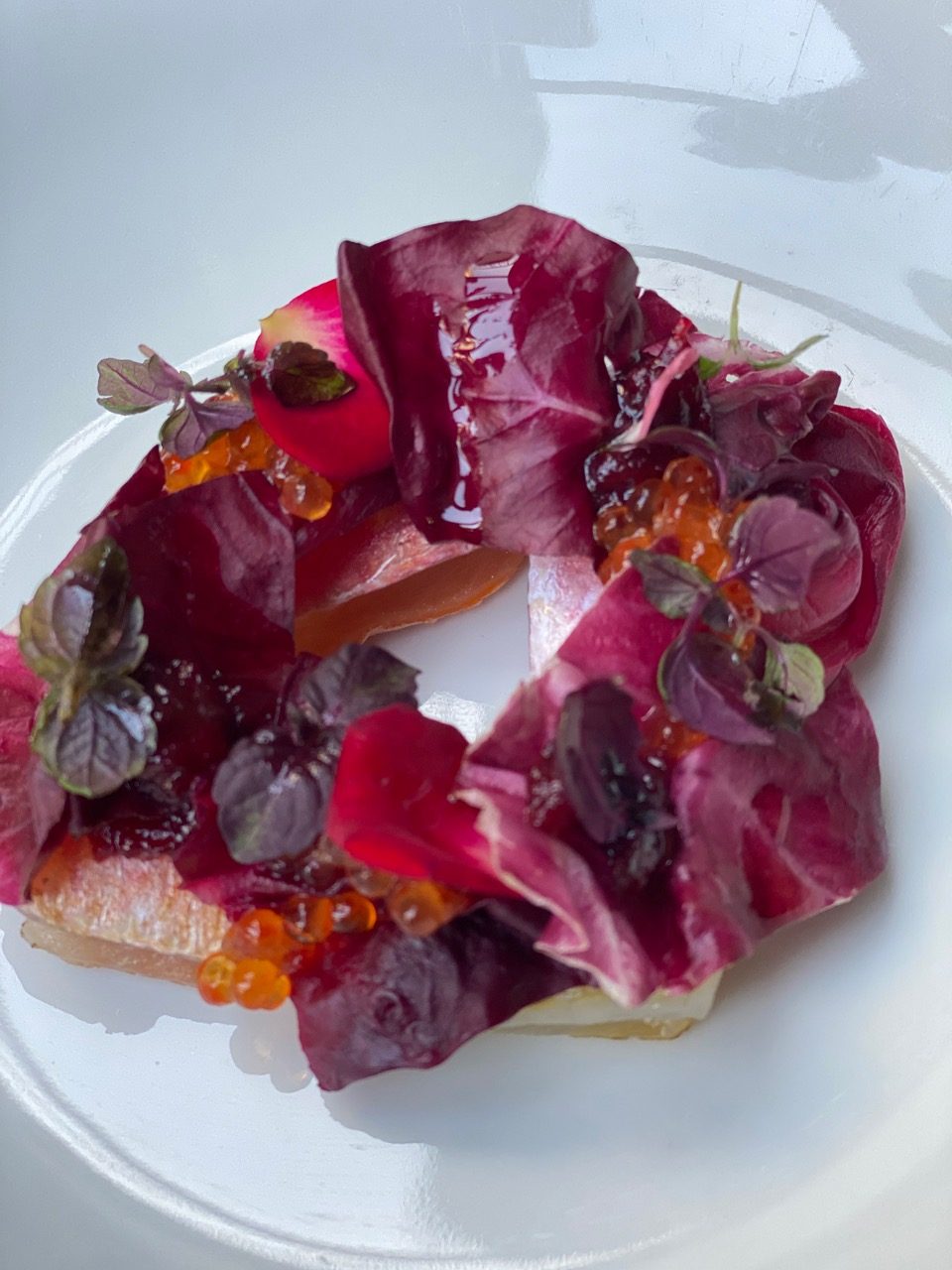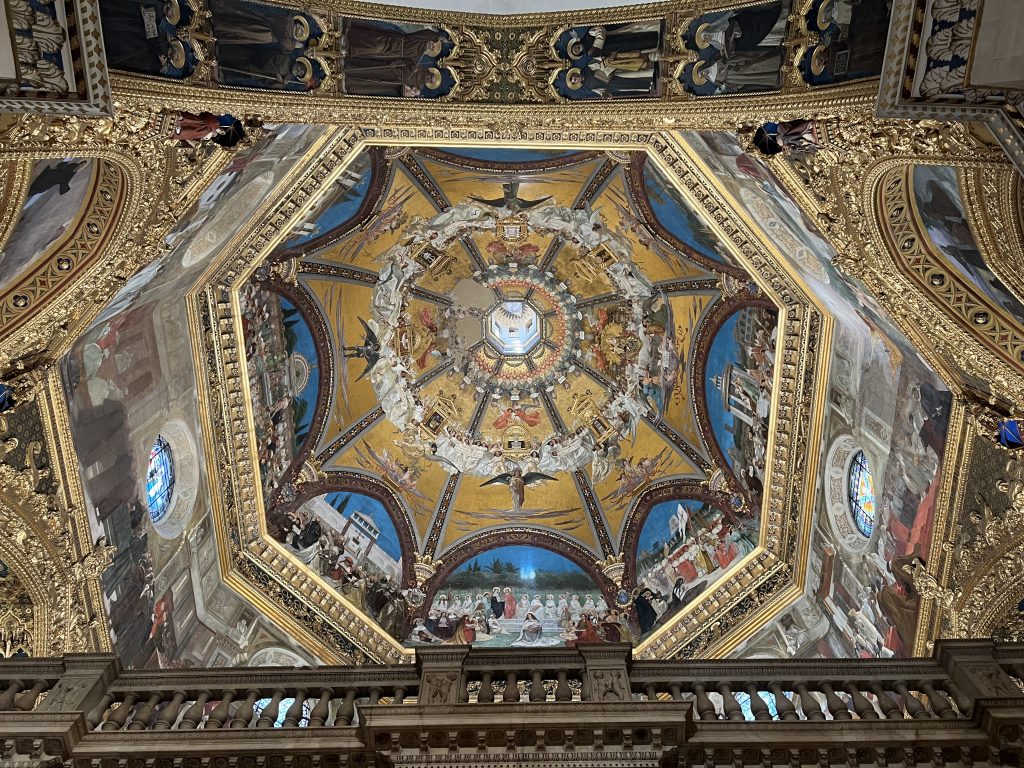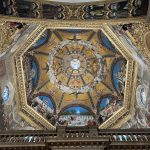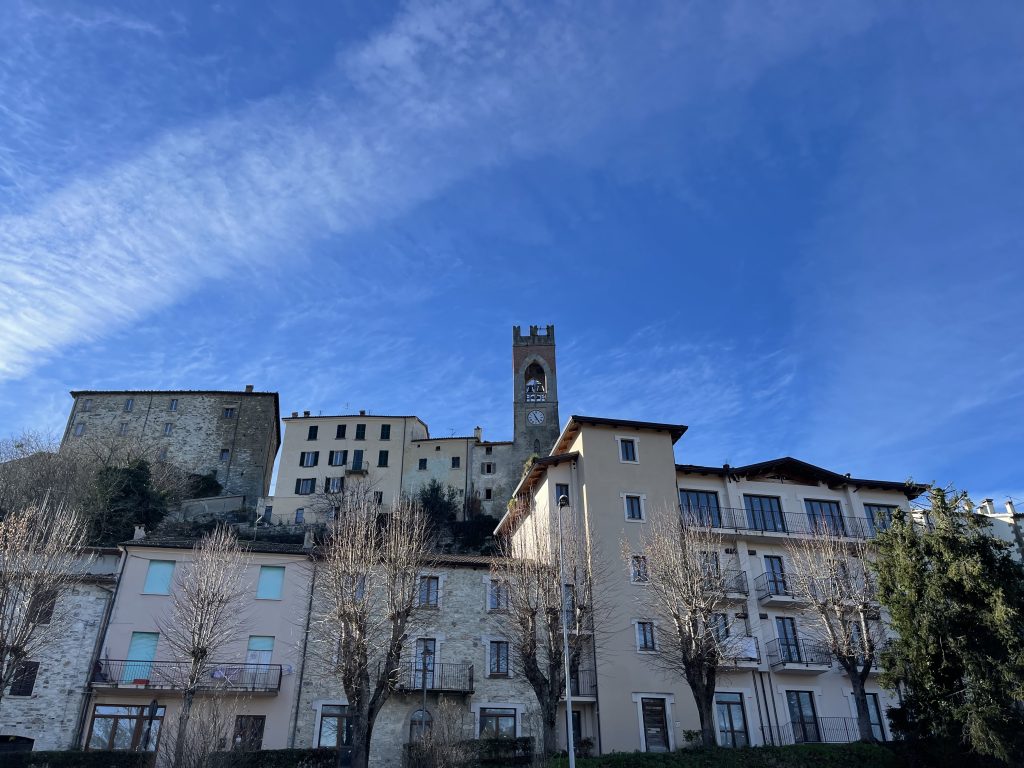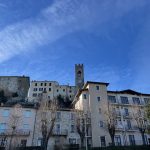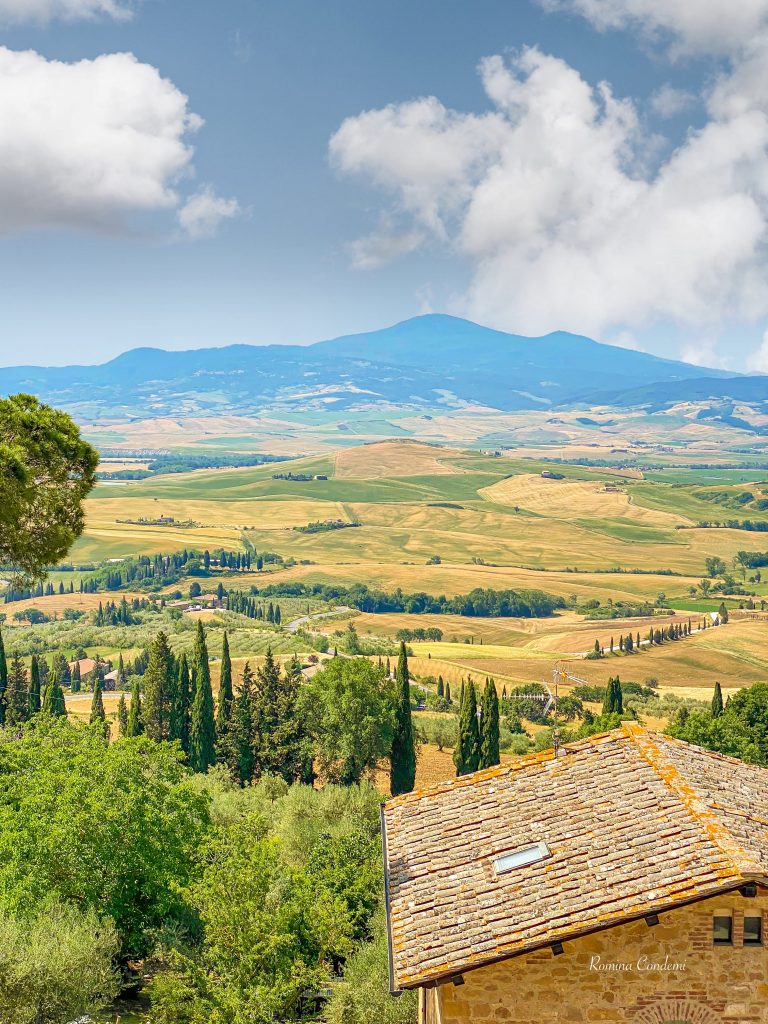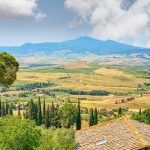Rimini’s Roman past has left an incredible legacy: the Arch of Augustus, one of the only 4 surviving triumphal arches in the world built by Emperor Augustus, whose white marble reflects the sunlight, transforming it into a door of light.
It is the meeting point of the adolescents of Rimini, who make their appointments here before the “tubs” on Saturday.
Arco di Augusto
Gate of the ancient Ariminum, it is the arrival point for those who come on foot from the sea or from the Park walking along the green ring. It begins the Decumanus at the end of which is the magnificent and mighty Tiberius Bridge, perfectly preserved, which connects the center of Rimini with one of the most beautiful views of the city, namely the Borgo di San Giuliano.
The smallest itinerary we have chosen for those who do not want to miss the main beauties of Rimini, is outlined on the right axis (Corso D’Augusto) that from the Arch reaches the Tiberius Bridge, enclosing 2000 years of passages and thoughts of the people who looked out above and below their arches.
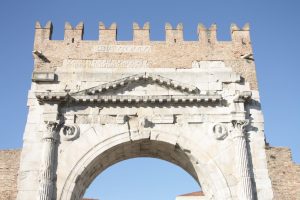 1. GOOD MORNING RIMINI!
1. GOOD MORNING RIMINI!
The Arch of Augustus, the symbol of the city
The Arch of Augustus is the perfect place to start this Rimini visit out of the clichés of beach life and flip flops: what better than him can immediately give us an idea of the history of this city? One of the most important cities of the Roman Empire: the remains are recurrent, from the beginning of the Via Emilia, to the Roman amphitheater, to the spectacular Domus del Surgeon. We will often meet them while we walk, in the statues, in the names of the streets, in the small excavations that appear here and there in the main streets of the center …
The Augusteo Arch, (well preserved among other things) inspired Alberti for the conception of the Malatesta temple. Fix your attention on the triangular tympanum, then on the round tiles that show the protective deities of the city and of Rome, look at the Corinthian capitals, the two columns and the Arch of the door.
Take these elements as the red thread of your visit or explore every detail with a valid personal guide.
But now let’s go along Corso di Augusto: it is the main street of the historic center, full of shops of the big brands (but in the nearby alleys there are excellent and exclusive boutiques) and let’s start this direct walk to the main points of Rimini: you will find yourself in a large square with a large sun-sundial drawn in the pavement at its center. It is Piazza Tre Martiri, the crossroads of the cardo and the Decumano, place of the memory of the Martyrs of the Second World War, keep your right to get to the Cathedral of the city, candidate to be a UNESCO World Heritage Site for its centrality in the culture that gave birth to the Renaissance, better known as:
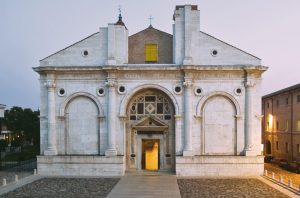 2. THE TEMPLE OF BEAUTY
2. THE TEMPLE OF BEAUTY
An unmissable visit to the Malatesta Temple, which will turn into a journey into the kingdom of symbols.
Continuing our walk, we take a leap over the centuries when we find ourselves in front of the Cathedral of Rimini, better known as the Malatesta Temple, the very emblem of the Renaissance. This temple of beauty is magnetic for our gaze. It is capable of making us feel small beings dominated by the grandeur of architecture and human capabilities.
 The gaze is not the only one to remain trapped by it: even the heart leaps in front of a similar vision, even more so knowing that this place was about to be carried away by the bombings of the Second World War, when Rimini was one of the most hit with 90% of buildings destroyed.
The gaze is not the only one to remain trapped by it: even the heart leaps in front of a similar vision, even more so knowing that this place was about to be carried away by the bombings of the Second World War, when Rimini was one of the most hit with 90% of buildings destroyed.
But what are those bricks that can be seen on top of the facade of the Temple?
They are none other than the walls of the pre-existing church, which was literally covered by the genius of Leon Battista Alberti with the marble layer that we see today. Looking at this detail, we understand that the Temple is incomplete! How could it have become?
Here it is, in the Matteo de ‘Pasti medal (1450), in the one considered to be the complete facade as designed by Leon Battista Alberti.
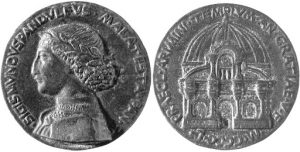 On the other side of the coin there is the effigy of the precursor patron of Lorenzo De’Medici and Lord of Rimini: Sigismondo Malatesta.
On the other side of the coin there is the effigy of the precursor patron of Lorenzo De’Medici and Lord of Rimini: Sigismondo Malatesta.
ready to visit the inside of the temple?
the word to the beauty experts!
This place is a true book of symbols: every symbol, every image has something to tell. If we start reading it, we can’t stop anymore!
It has been defined by great scholars as a “book carved in stone” and also the “Sistine Chapel of sculpture”, if you want to fully grasp the interpretations and scope of this work for Western thought, it is absolutely necessary to be assisted by a true expert. .
We rely on the greatest-young expert in Rimini’s art and beauty, Prof. Giovanardi. And here the visit to the Temple becomes unforgettable: the Professor illustrates and enlightens us on all the symbolic meanings of the reliefs carved in the Temple: from the simplest ones such as the elephant and the quadripetala rose to the internal cycles of the zodiac signs, emphasizing the life of Sigismondo, the love for his Isolde combined with the secular and Catholic vision of East and West that merged in the decorations of the various chapels.
After the visit, we go out again on the cardo towards Corso d’Augusto, towards the next hidden treasure or if you have more time, lengthen the journey a little and take the streets that line the outer side of the Malatesta Temple: you will find some particular shops such as La carteria del centro (necklaces, and earrings), Adriano La gioielleria dei Formaggi (reference point of the Rimini elite for its selection of cheeses), the cafeteria where our coffee experience is held, with Angelo, internationally awarded, skilful connoisseur of coffee.
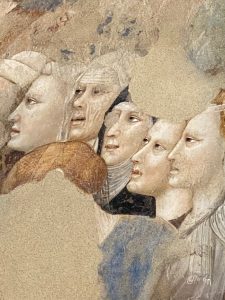 3. THE RIMINI SCHOOL OF THE 14TH CENTURY
3. THE RIMINI SCHOOL OF THE 14TH CENTURY
The frescoes of the Rimini School inside the Church of Sant’Agostino
As normal as it may seem like any other church, don’t be fooled by the outward appearance of the Church of Sant’Agostino! We Beautrippers like to go into the most unlikely places or places that usually go unnoticed.
This sacred place has been greatly re-evaluated in recent times thanks to the exhibitions on the most renowned painters of the Rimini school such as Giovanni da Rimini at the National Gallery in London, which have turned the spotlight on the value of the fourteenth-century painters of Rimini, on the influences of the passage of Giotto, but also thanks to the splendid photos of Gilberto Urbinati who took up close images of the frescoes (even those placed very high up) and allowed us to realize the expressions, the humanity of the faces and the mastery of these painters. If you are like St. Thomas I suggest you buy the book “The rediscovered fourteenth century. The frescoes of the church of Sant’Agostino di Rimini”
Let’s admire them closely in the apse and then follow the advice of Prof Giovanardi (“The colors of Rimini, an imaginary picture gallery”) who illustrates the other masterpieces of the fourteenth century school exhibited at the City Museum: the angels with colorful wings like those of the hummingbirds of Giovanni Bellini’s “Pieta ‘” are our favorites!
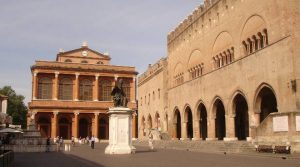 4. THE HEART OF CULTURAL LIFE
4. THE HEART OF CULTURAL LIFE
Piazza Cavour between music, art, food and nightlife
Piazza Cavour is a corner of breath that opens up after walking along the very popular Corso d’Augusto, where the lifeblood of this city center flows.
Here you can decide whether to visit the Galli Theater, (rebuilt after the bombings and inaugurated at the time by Verdi himself), the new PART Museum of Contemporary Art (the Palazzi dell’Arte), the Fontana della Pigna (another point of meeting for the Riminesi Doc) or make a stop in one of the cafes in the square, from which we can continue to observe it.
Indeed, it is one of the few corners of Rimini that preserves the red color in the bricks of its buildings, which allows us to breathe all its Italian character. For lovers of bricks, and brick decorations, Rimini reserves some beautiful joys! write to us for a map of the various buildings to follow.
the cultural walk continues, behind the theater!
This Renaissance line of Rimini, of which the Malatesta Temple represents one of the greatest achievements, has another point of reference in the Malatesta Fortress exactly behind the Galli Theater, known as Il Castel Sismondo. It is the stronghold of Rimini history and its culture, originally being the residence of the Malatesta lordship. Today it carries on its role as a catalyst center of culture, hosting the Fellini Museum inside: do not miss the beautiful multimedia exhibition on the great Rimini director Federico Fellini curated with evocative and intoxicating installations and creations, both inside and in the facing squares with rarefied atmospheres of water.
 The Fellini Museum continues through the sculpture garden to Corso d’Augusto where we can stop and see a film in Fellini’s cinema, or stop for lunch in the starred restaurant Abocar due cucine, the scene of our exclusive “one day with the starred chef experience ”With Mariano Guardianelli. A unique experience to enter the mindst of the chef, and enjoy it from shopping, to the preparation of the brilliant menu. The taste buds will thank you. Do you want to leave the exploration of top-level food until tomorrow?
The Fellini Museum continues through the sculpture garden to Corso d’Augusto where we can stop and see a film in Fellini’s cinema, or stop for lunch in the starred restaurant Abocar due cucine, the scene of our exclusive “one day with the starred chef experience ”With Mariano Guardianelli. A unique experience to enter the mindst of the chef, and enjoy it from shopping, to the preparation of the brilliant menu. The taste buds will thank you. Do you want to leave the exploration of top-level food until tomorrow?
Then continue towards the Tiberius Bridge.
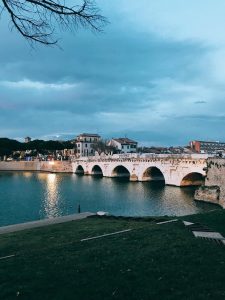 5. THE PIAZZA D’ACQUA AND THE MILLENARY BRIDGE
5. THE PIAZZA D’ACQUA AND THE MILLENARY BRIDGE
Beyond the Tiberius Bridge, we enter a timeless village
As we did at the beginning of the route passing under the Arch of Augustus, now we cross another place that is a concentrate of history: the Tiberius Bridge. the Caput viarum of the Via Emilia so dear to the Romans, celebrated 2000 years of good functioning despite wars and bombings, earning the nickname “pont e diavli” (The Devil’s Bridge) for its indestructibility and persistence in front of with each attack. It is the only Roman bridge in the world that is still perfectly intact and functional! At the time of the Grand Tour of the European nobility, the Tiberius bridge was a star, a must. Just as Turner or Piranesi did, you can stop and paint it with watercolors during the #Sketchtrip experience led by an established Rimini artist who will make you appreciate the history and details of this masterpiece.
 During the day it is a bustle of pedestrians and bicycles (Rimini is a city that is perfect for cycling!), But at night and at sunset (golden hour!) The Tiberius Bridge gives its best: it turns into a place silent and poetic. The reflection of its arches is completed in the black water, becoming a perfect circle.
During the day it is a bustle of pedestrians and bicycles (Rimini is a city that is perfect for cycling!), But at night and at sunset (golden hour!) The Tiberius Bridge gives its best: it turns into a place silent and poetic. The reflection of its arches is completed in the black water, becoming a perfect circle.
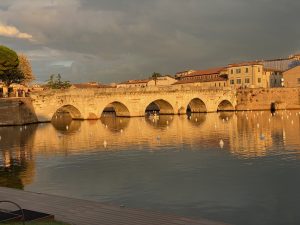 If the time at your disposal allows it, rest on the edge of the water square and in the park below (the Central Park of Rimini): it is a perfect place to stop for a moment, romantic and highly instagrammable to take pictures or plan dinner in some typical trattoria nearby.
If the time at your disposal allows it, rest on the edge of the water square and in the park below (the Central Park of Rimini): it is a perfect place to stop for a moment, romantic and highly instagrammable to take pictures or plan dinner in some typical trattoria nearby.
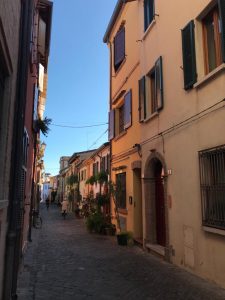 San giuliano, an ancient fishing village stopped in time
San giuliano, an ancient fishing village stopped in time
This village retains its aura of a timeless place, the soul of Amarcord di Fellini, a former den of sailors and sanguine people, it is a complete immersion in another dimension, made up of narrow and silent alleys, narrow houses and colored doors, loads of vibration and vitality behind the lace curtains that cover their windows.
It is truly an unmissable place: both because it is the most picturesque part of Rimini and because it is an open-air museum! Its walls speak: they are decorated with murals or with plates that recall the names of the fishermen who lived there.
Today, behind those colorful facades, ultra-design, welcoming and unique houses are hidden.
Turn randomly through the various streets … In the evening the Borgo comes alive for the informal aperitif that is often served with tables in the square, and with the numerous restaurants that have populated the Borgo with different culinary traditions.

